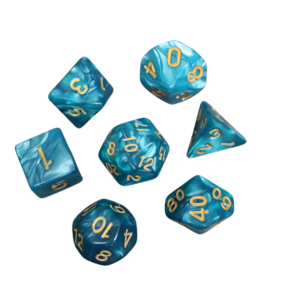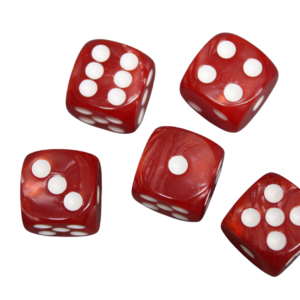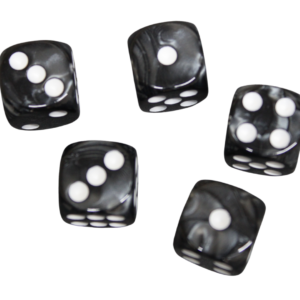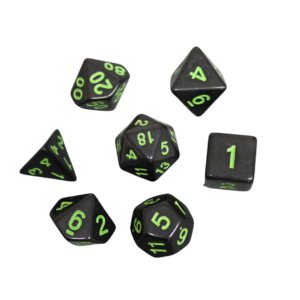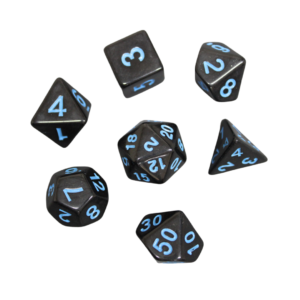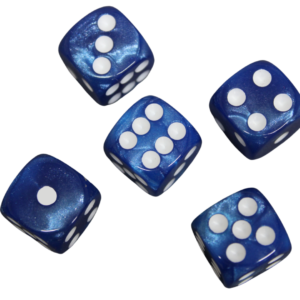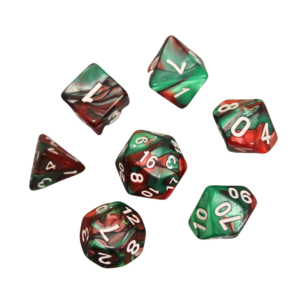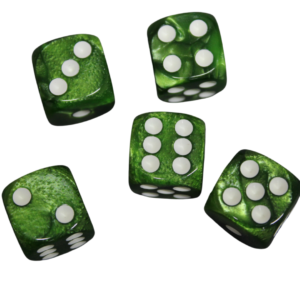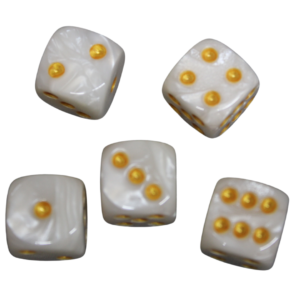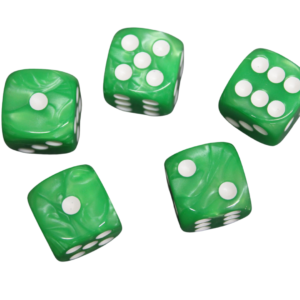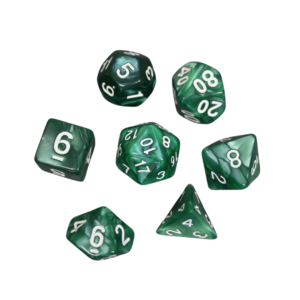16 mm D6 Dices
Introduction
The 16 mm D6 Dices are among the most commonly used six-sided dice in board games, tabletop role-playing games (RPGs), and educational settings. Their slightly larger size compared to 12 mm or 14 mm dice provides excellent readability, ease of handling, and a satisfying rolling experience.
These dice have been a crucial part of gaming for centuries and continue to be a staple in modern games. This guide explores everything about 16 mm D6 dice, from their history and design to their applications and care.
Characteristics of 16 mm D6 Dices
Standard Dimensions
- Size: Each die measures 16 mm along its edges.
- Shape: Cube with six equal sides.
- Numbering: Usually features pips (dots) or numerals from 1 to 6.
- Material: Commonly made from plastic, resin, wood, or metal.
- Weight: Varies based on material, with metal dice being significantly heavier.
Design Variations
While the traditional six-sided dice are standard, manufacturers offer several variations:
- Pip Dice: Classic design with dots representing numbers.
- Numbered Dice: Uses numerical digits instead of pips.
- Custom Dice: Special engravings, unique artwork, or themed dice sets.
- Transparent and Opaque Dice: Available in different finishes and colour schemes.
How 16 mm D6 Dices Are Made
Material Selection
Dice are crafted from various materials, each offering different benefits:
- Plastic: Lightweight and affordable, great for casual gaming.
- Resin: Vibrant colours with a durable finish.
- Metal: Heavy, premium feel, preferred by collectors.
- Wood: Natural aesthetic, often handcrafted.
Moulding and Shaping
For plastic and resin dice, manufacturers use precision moulds to create symmetrical cubes. Metal dice are often cast or CNC-machined for precision.
Numbering and Painting
- Pips and numbers are either engraved or embossed.
- High-quality dice feature deeply engraved pips with long-lasting paint.
Quality Control
- Balance and fairness tests ensure even weight distribution.
- Manufacturers inspect for imperfections to ensure randomness.
The Origins of 16 mm D6 Dices
Dice have been used for thousands of years, dating back to ancient civilizations. The six-sided die (D6) became a standard due to its balanced shape and ease of use. While smaller dice (12 mm, 14 mm) exist, the 16 mm D6 became widely preferred because it strikes the perfect balance between size and usability.
As gaming evolved, different materials and designs emerged, leading to the high-quality dice we see today.
Uses of 16 mm D6 Dices
Board Games
Many popular board games use 16 mm D6 dice for rolling and decision-making, including:
- Monopoly: Determines player movement.
- Risk: Used for battles and strategic moves.
- Ludo: Rolling the die controls movement on the board.
Role-Playing Games (RPGs)
Some RPGs incorporate D6 dice into their mechanics:
- GURPS (Generic Universal RolePlaying System): Uses D6 for various in-game calculations.
- Shadowrun: Features a dice pool system relying on D6 rolls.
Educational Applications
Dice are widely used in teaching probability, arithmetic, and logical thinking. Teachers use them for:
- Math Lessons: Probability experiments, statistics, and number games.
- Interactive Learning: Enhancing problem-solving skills.
Caring for Your 16 mm D6 Dices
Cleaning Tips
- Plastic and Resin Dice: Wipe with a damp cloth and mild soap.
- Metal Dice: Use a soft cloth to prevent tarnishing.
- Wooden Dice: Keep away from moisture to prevent damage.
Storage Solutions
- Dice Bags: Protect dice from scratches and dirt.
- Dice Trays: Provide a controlled rolling space.
- Dice Boxes: Offer structured organisation and safekeeping.
Choosing the Right 16 mm D6 Dices
Material Considerations
- Plastic and Resin: Best for casual players and everyday use.
- Metal: Preferred by collectors and those who like heavier rolls.
- Wood: Unique aesthetic, great for handmade dice enthusiasts.
Readability and Design
- High-Contrast Pips: Improve visibility and make numbers easier to read.
- Custom Designs: Themed dice sets add personality and uniqueness.
Weight and Balance
High-quality dice ensure fair rolls by maintaining even weight distribution.
Rolling Techniques for Fair Gameplay
To achieve the most random and fair results, consider the following rolling techniques:
- Use a Dice Tray: Prevents dice from rolling off the table and ensures even surfaces.
- Shake Before Rolling: Helps randomise outcomes.
- Avoid Overly Hard Throws: Ensures a balanced roll.
Conclusion
The 16 mm D6 Dices remain a vital part of board games, RPGs, education, and collecting. Their ideal size, durability, and versatility make them one of the most popular
